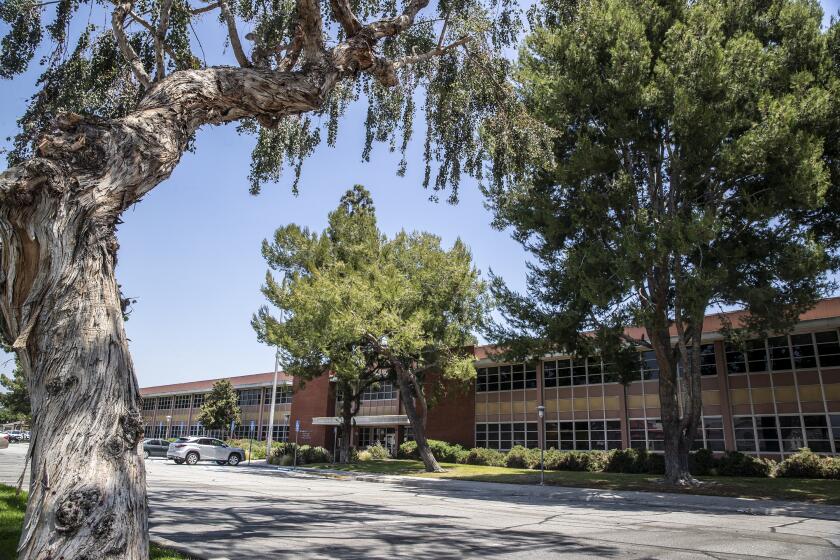Photos: Exploitation awaits migrant children in Mexico
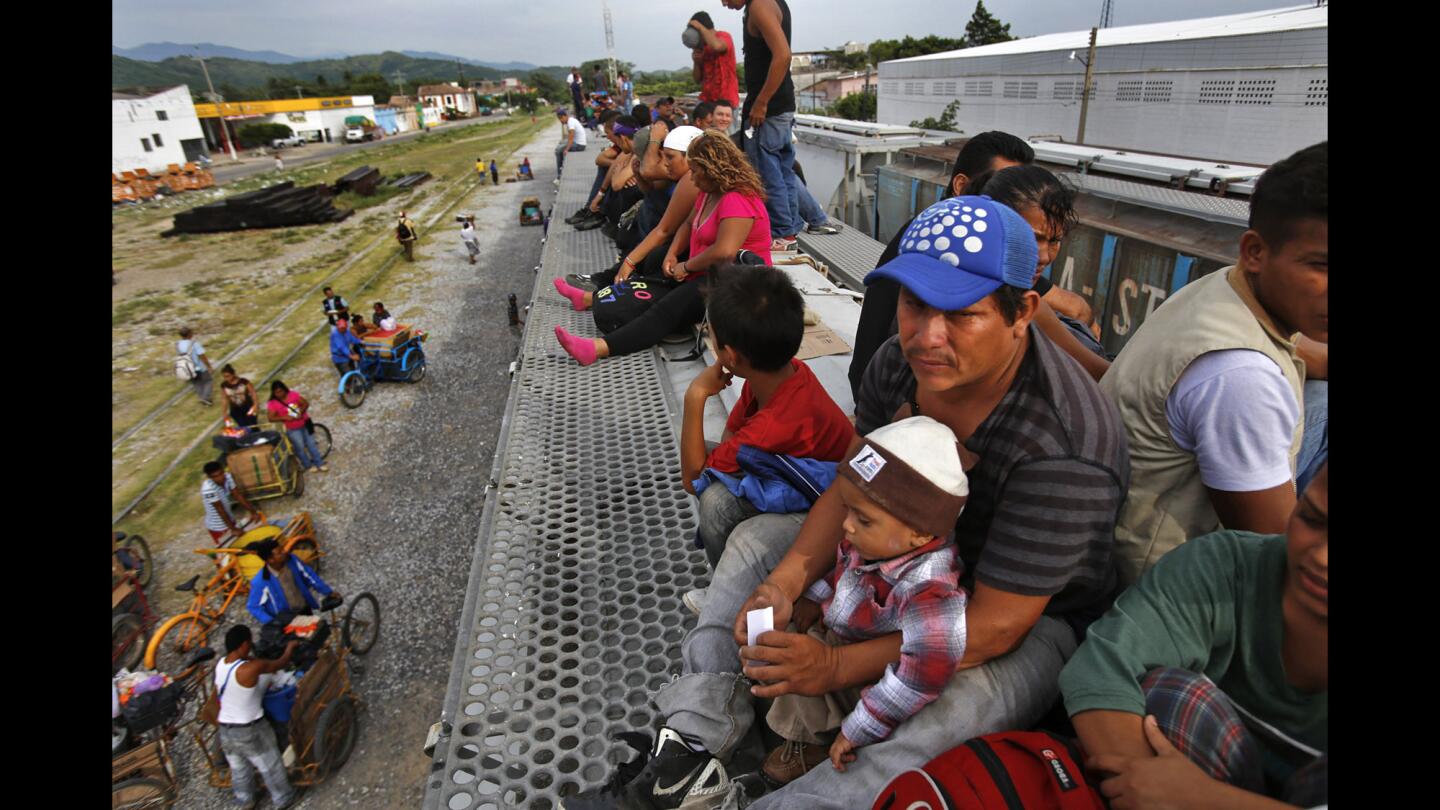
Eric Castellanos holds his 2-year-old son, Steven, on the roof of the freight train he hopes will take the family to a better life in the United States. Castellanos is from Escuintla, an impoverished and gang-ridden city on Guatemala’s coastal plain. (Michael Robinson Chavez / Los Angeles Times)
Unaccompanied migrant minors are nothing new along the Mexico-Guatemala border. But little has been done to address what diplomats, activists and the migrants themselves say is a central problem: the exploitation of the young and vulnerable by police, gangs and others.
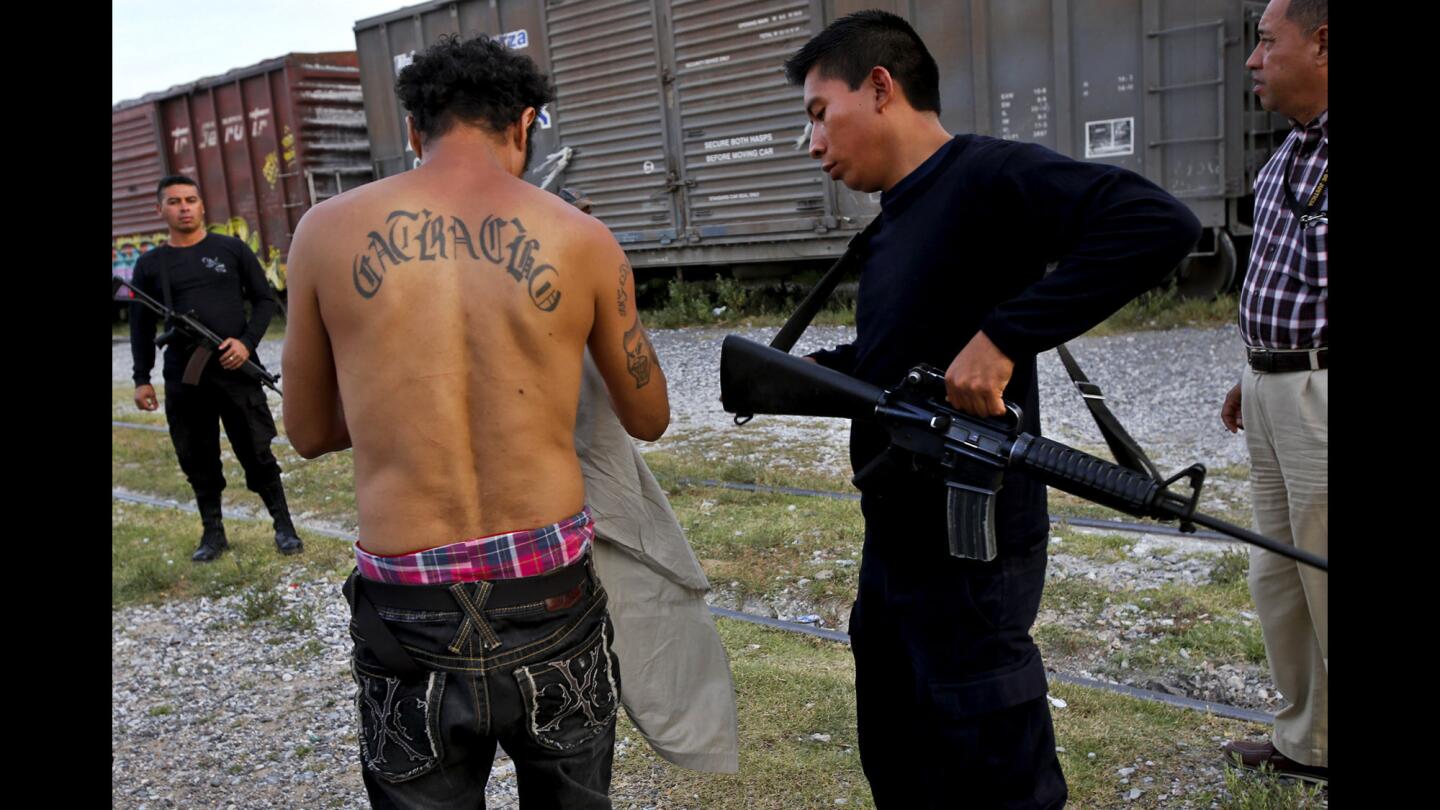
State police in Chiapas, which borders Guatemala, look at the tattoos of a migrant from Honduras to make sure he isn’t part of a gang that preys on those riding the train north to the United States. (Michael Robinson Chavez / Los Angeles Times)
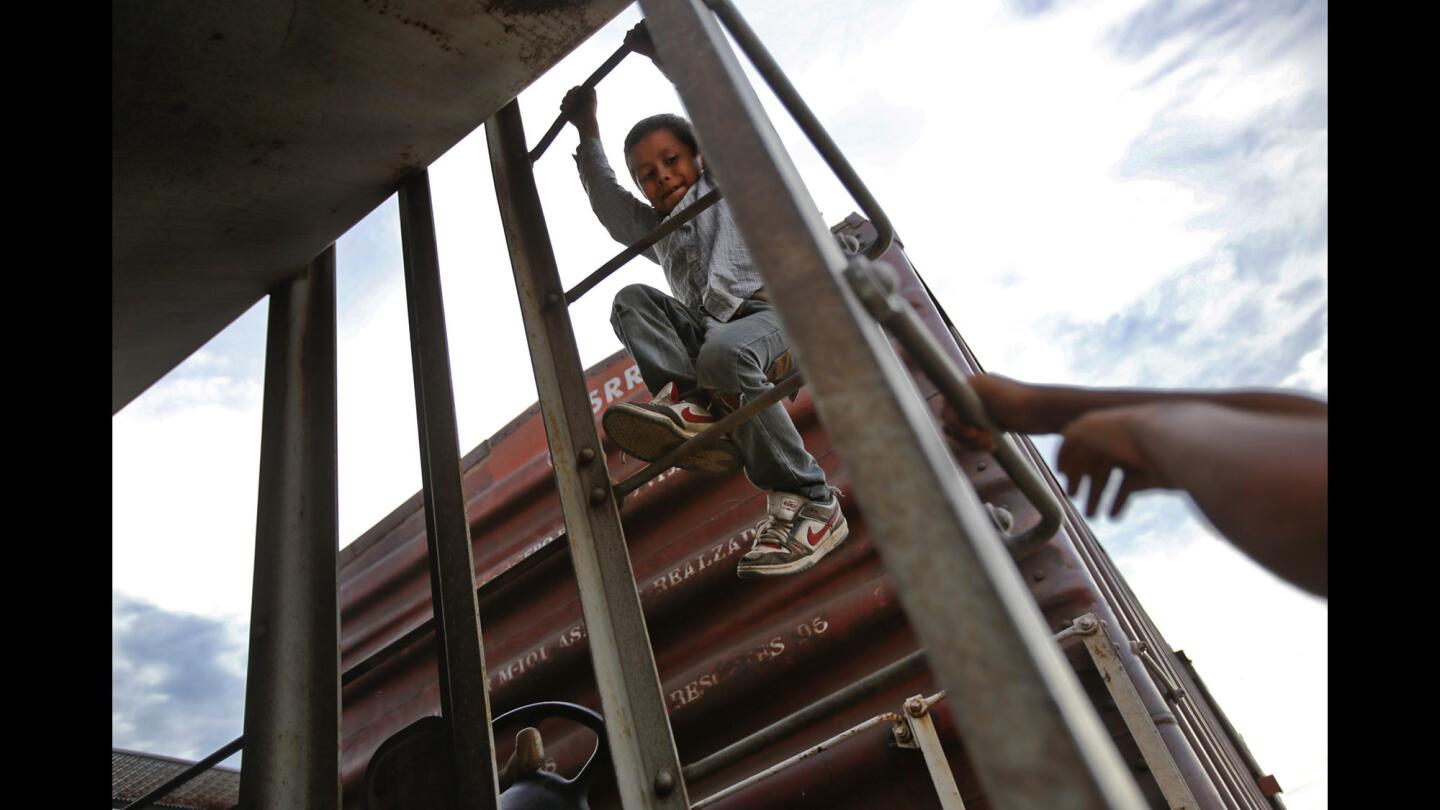
Henry Canalesola, 8, of El Salvador climbs aboard “La Bestia” at the train yard in Arriaga. He was traveling to the United States with his sister, mother and stepfather. (Michael Robinson Chavez / Los Angeles Times)
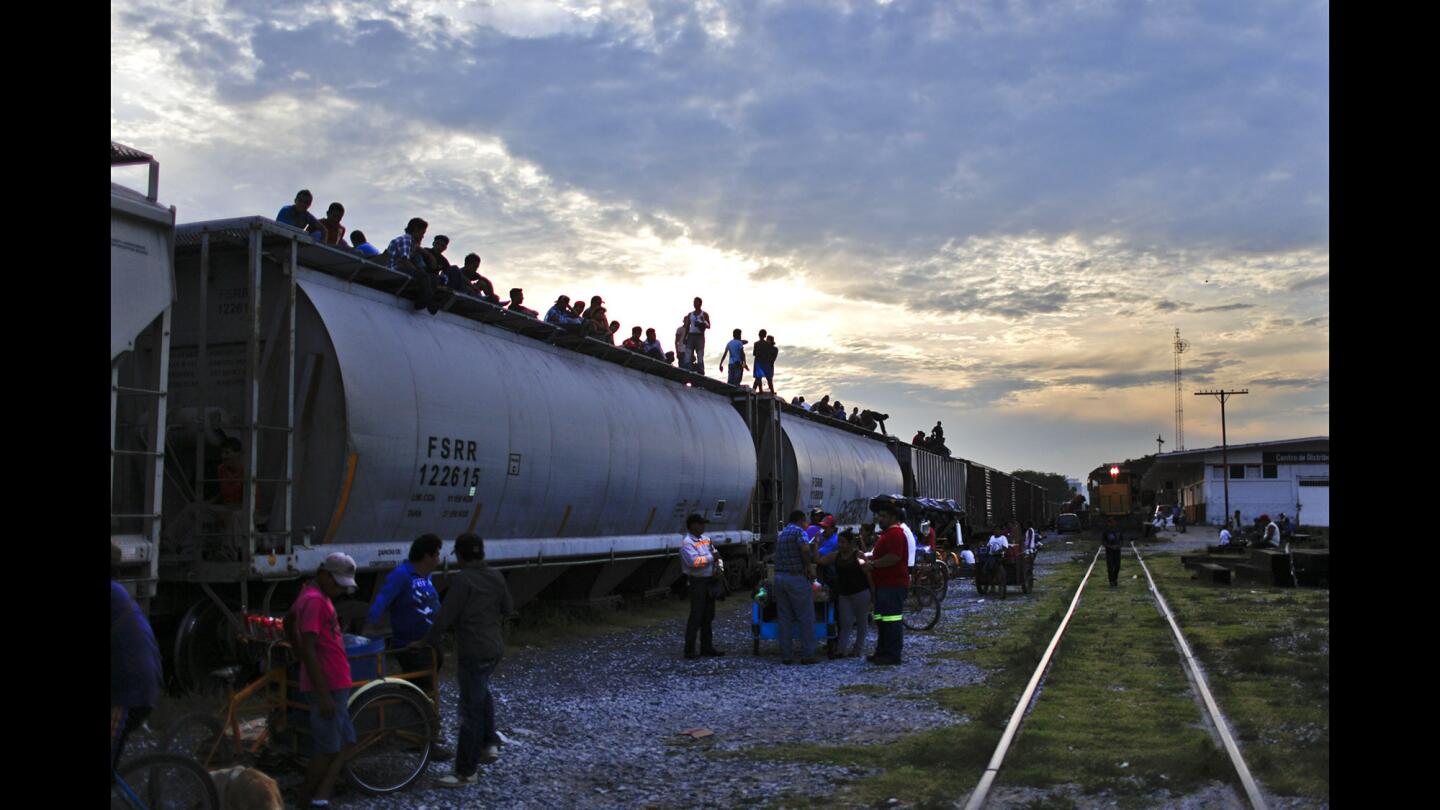
Migrants in the southern Mexican city of Arriaga, minors among them, wait atop “La Bestia,” a nickname for the dangerous train they ride north through Mexico. Many never make it out of Chiapas and are either deported or end up staying on in Mexico’s poorest state. (Michael Robinson Chavez / Los Angeles Times)
Advertisement
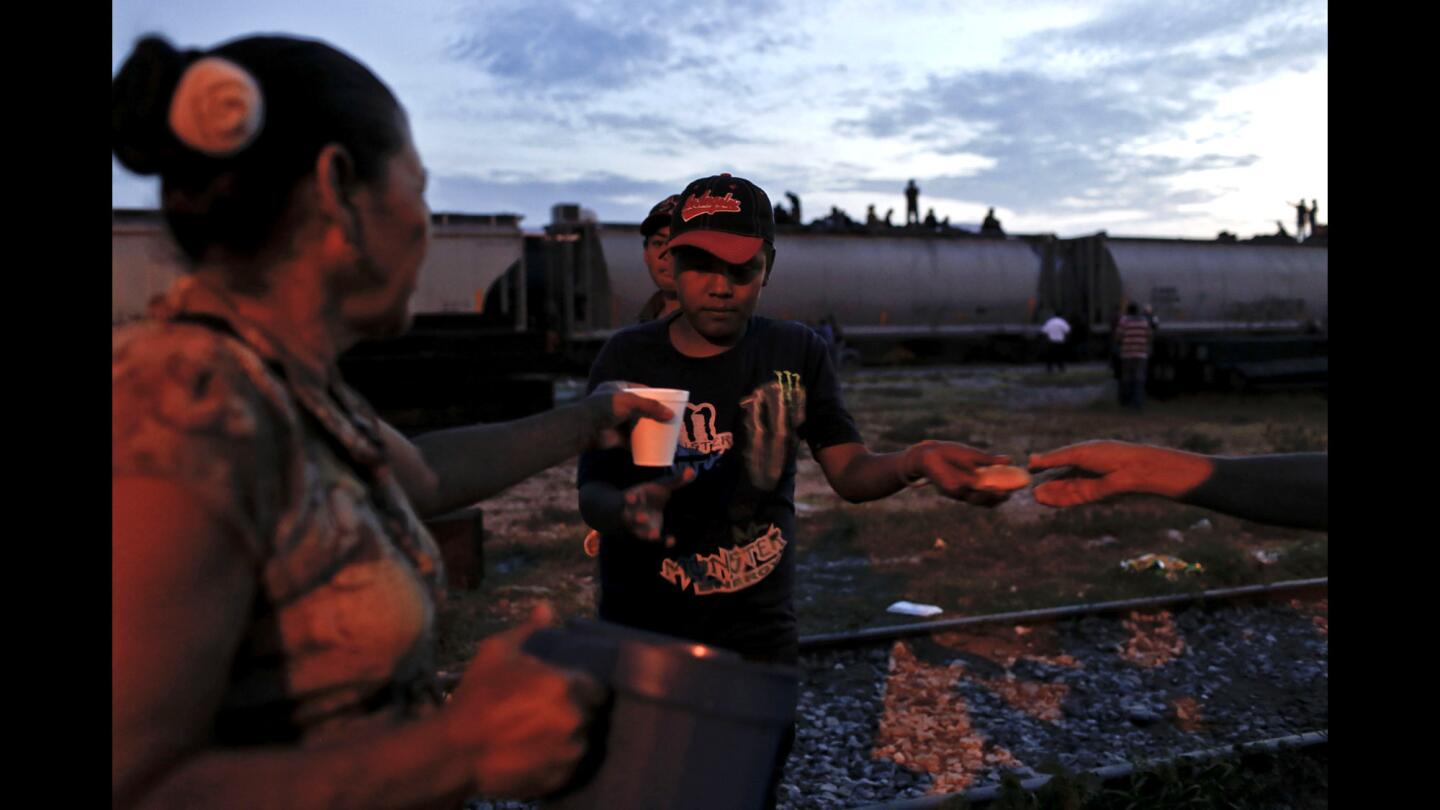
Members of a church in Arriaga hand out coffee and cakes to Central American migrants that ride “La Bestia.” Elwin Canepa, 14, was traveling on his own to the United States from El Slavador. (Michael Robinson Chavez / Los Angeles Times)
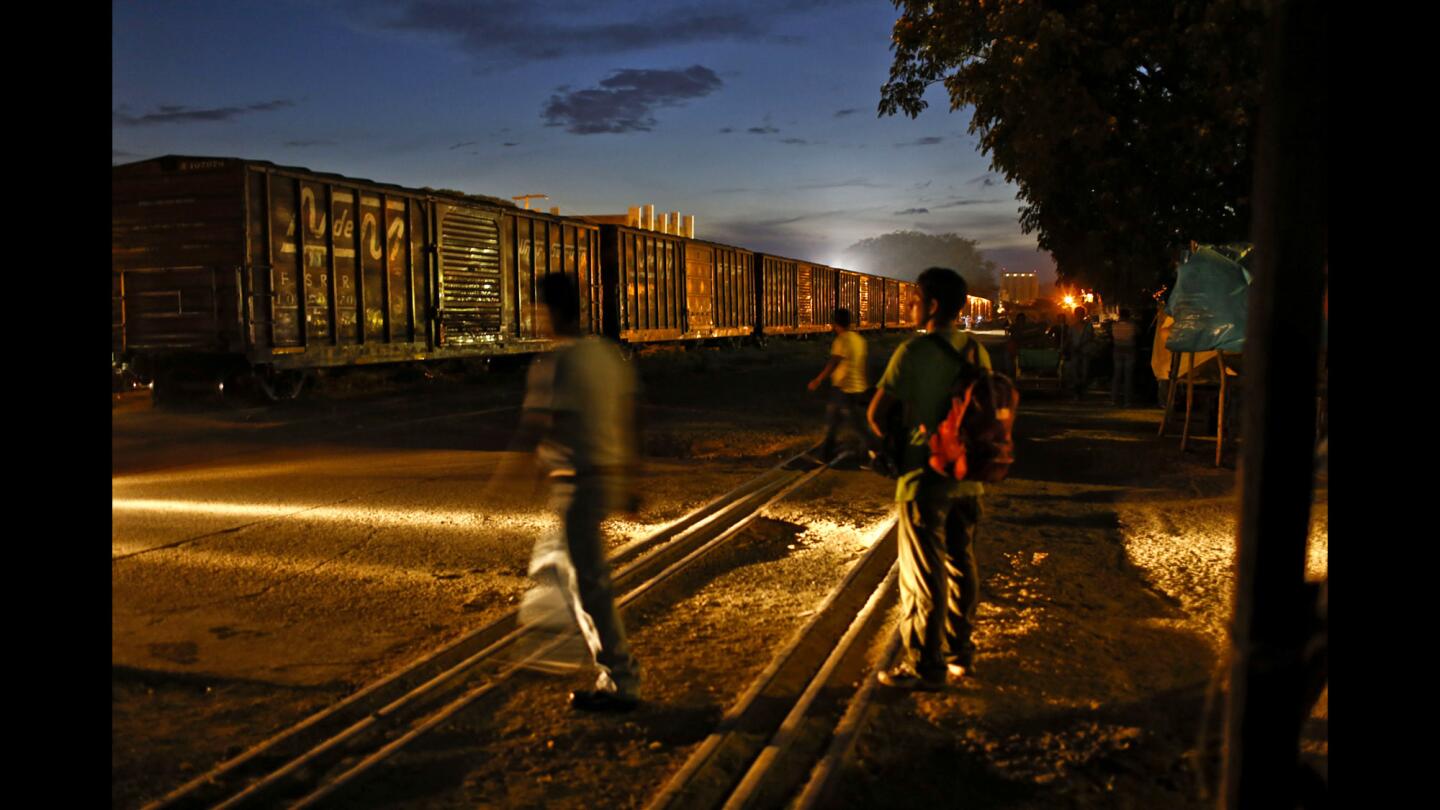
Central American migrants wait to board “La Bestia” in the southern Mexico city of Arriaga. The city is rife with gang members who prey on the migrants, demanding money and throwing those who don’t pay off the train. (Michael Robinson Chavez / Los Angeles Times)
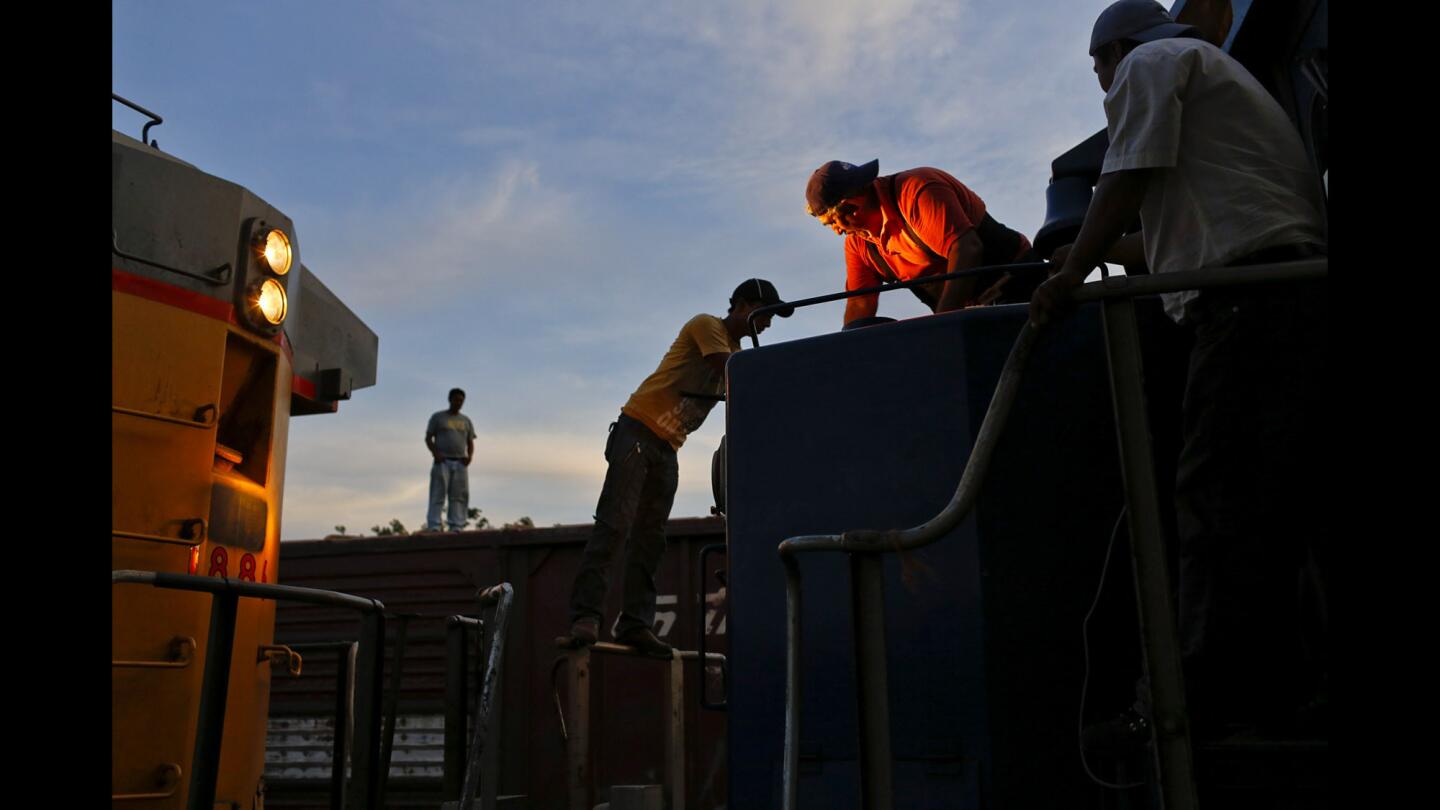
Engineers load sand into the locomotive of “La Bestia” to help ensure a solid grip for the wheels during rain. (Michael Robinson Chavez / Los Angeles Times)
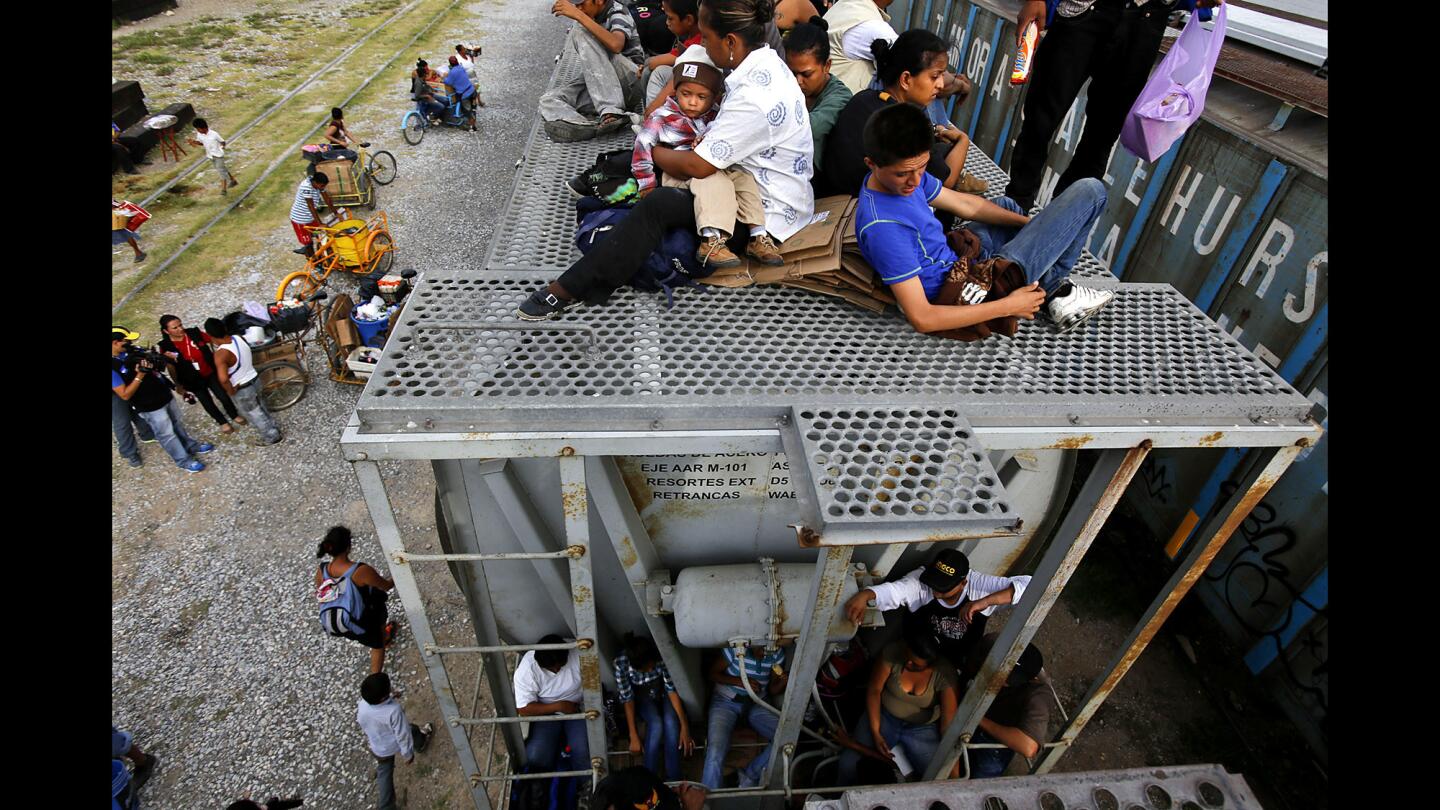
Central American migrants sit aboard “La Bestia” in Arriaga, southern Mexico. (Michael Robinson Chavez / Los Angeles Times)
Advertisement
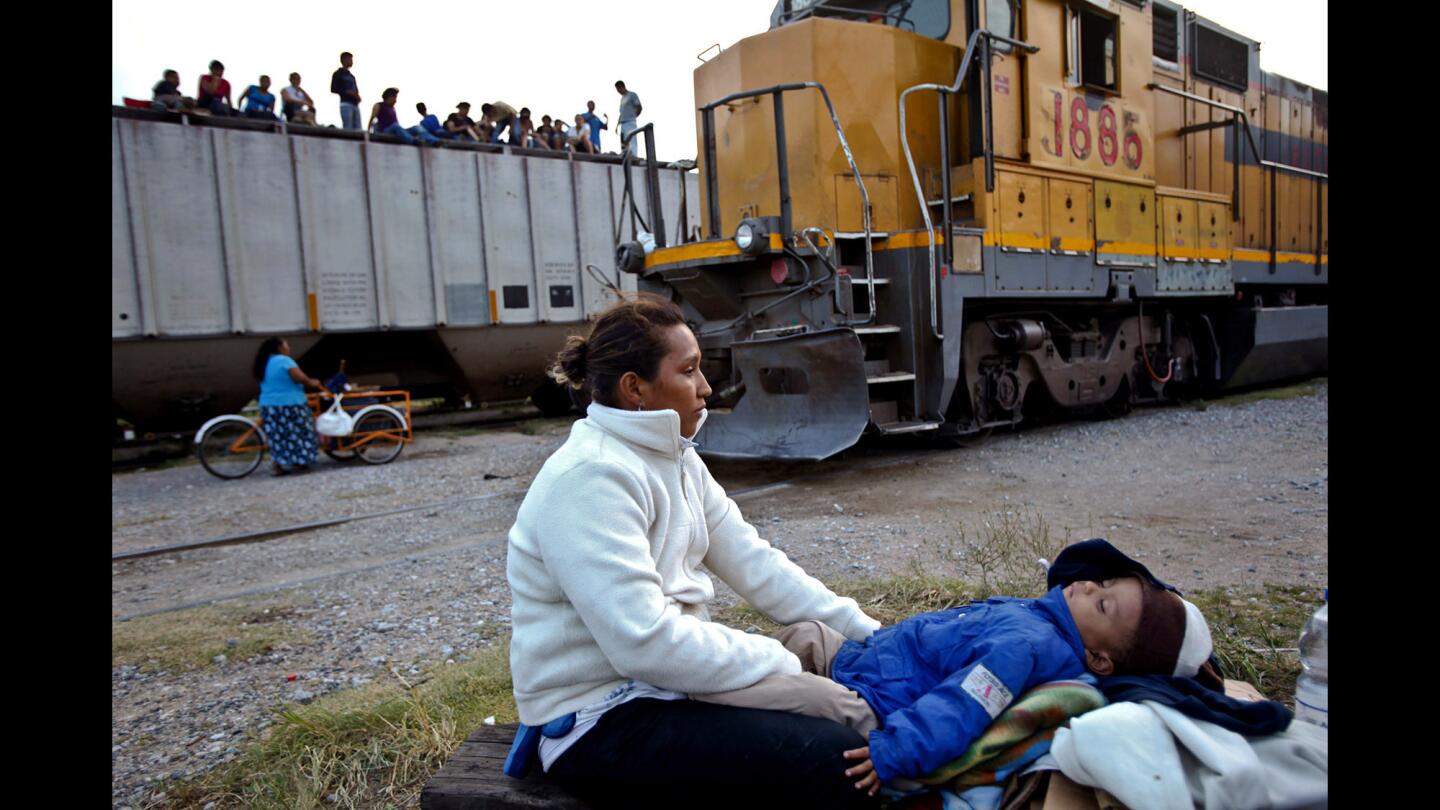
Kimberly Castellanos sits in the train yard in Arriaga with her 2-year-old son, Steven. They were making their way north aboard “La Bestia,” a notoriously dangerous freight train that runs through Mexico. (Michael Robinson Chavez / Los Angeles Times)
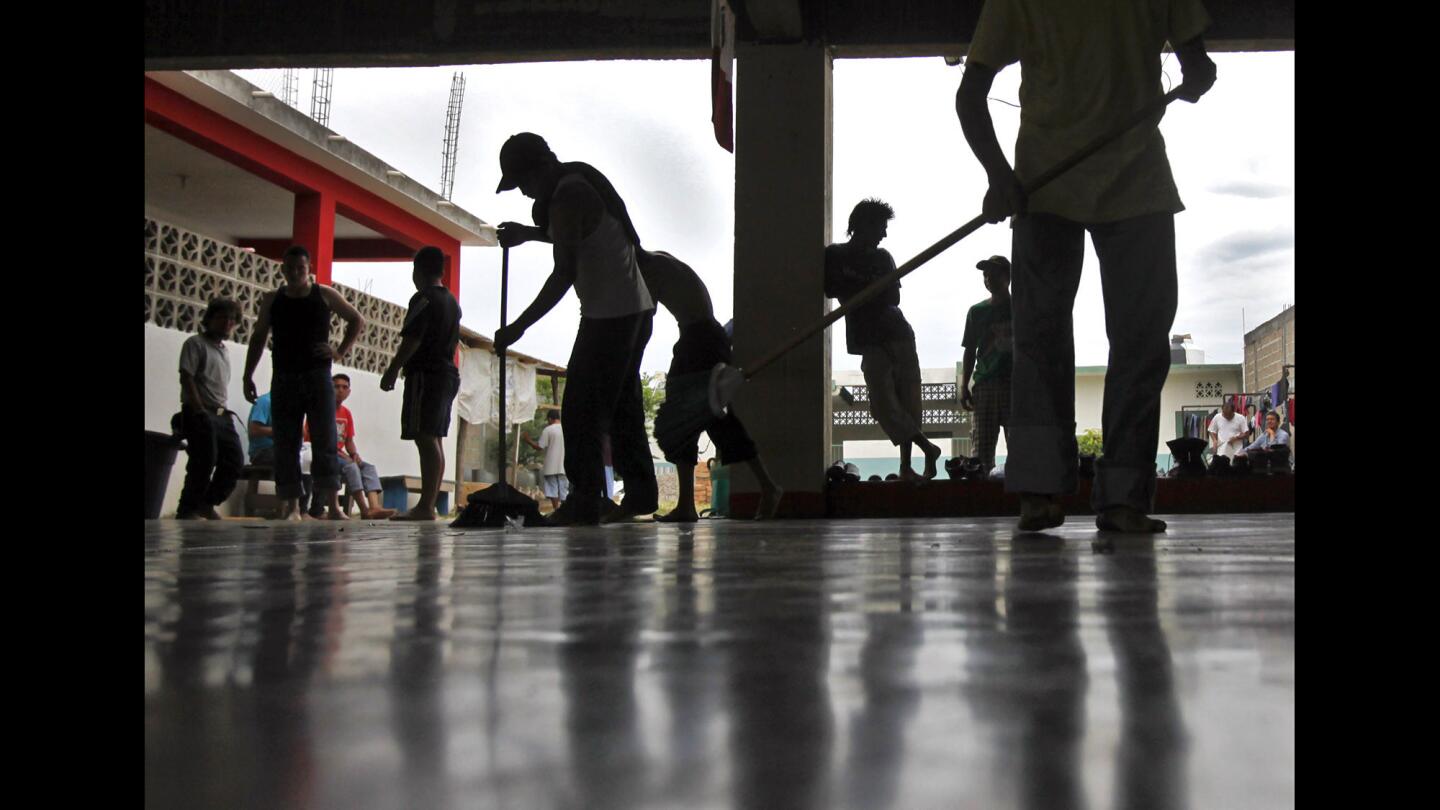
Migrants clean the floor at a shelter in the southern Mexican city of Arriaga. (Michael Robinson Chavez / Los Angeles Times)
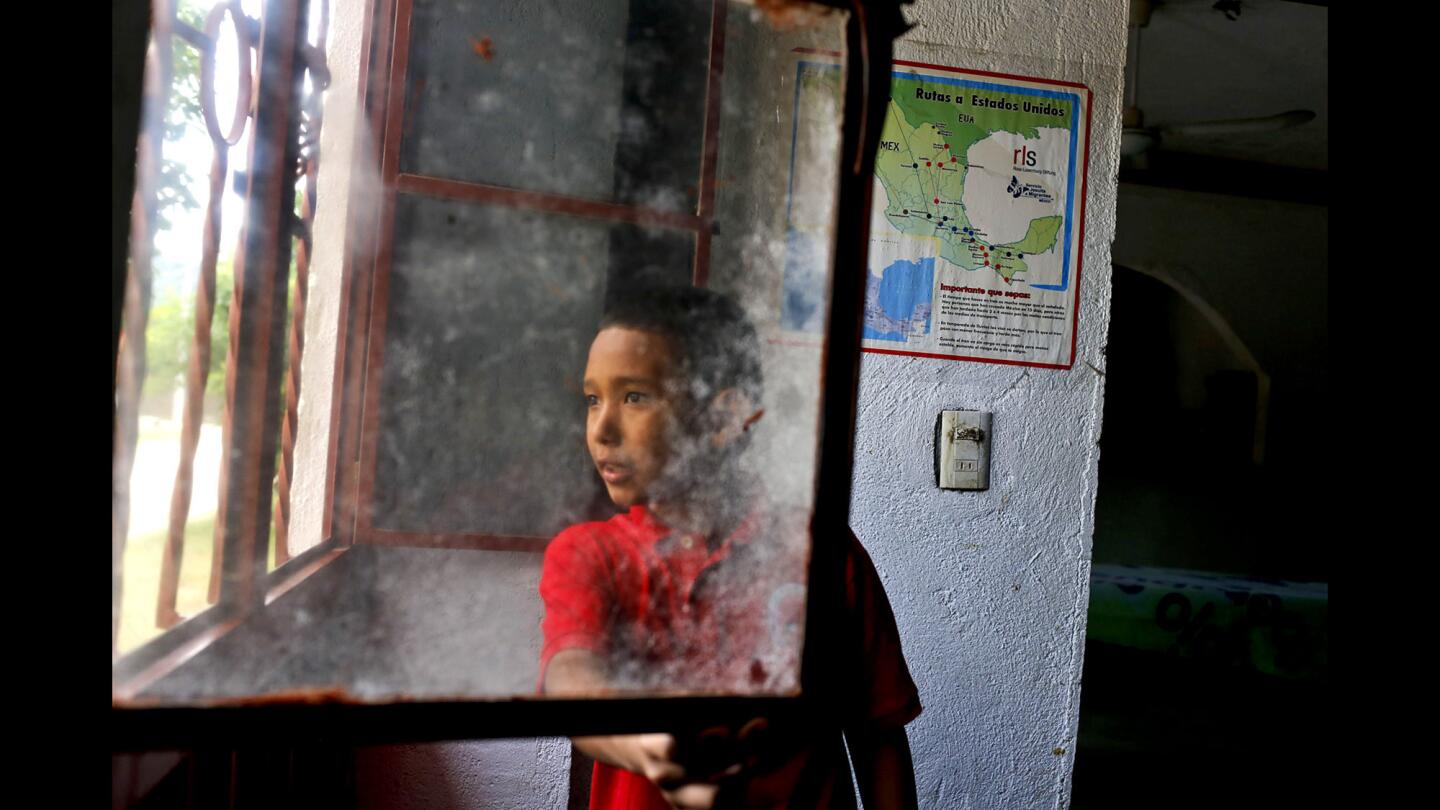
Oscar Amendariz, 10, of La Ceiba, Honduras, looks out the window of a shelter for migrants in Arriaga, Mexico. He and his mother, after being briefly held by gangs in the area, were hoping to get papers that would allow them to take buses instead of the train. (Michael Robinson Chavez / Los Angeles Times)
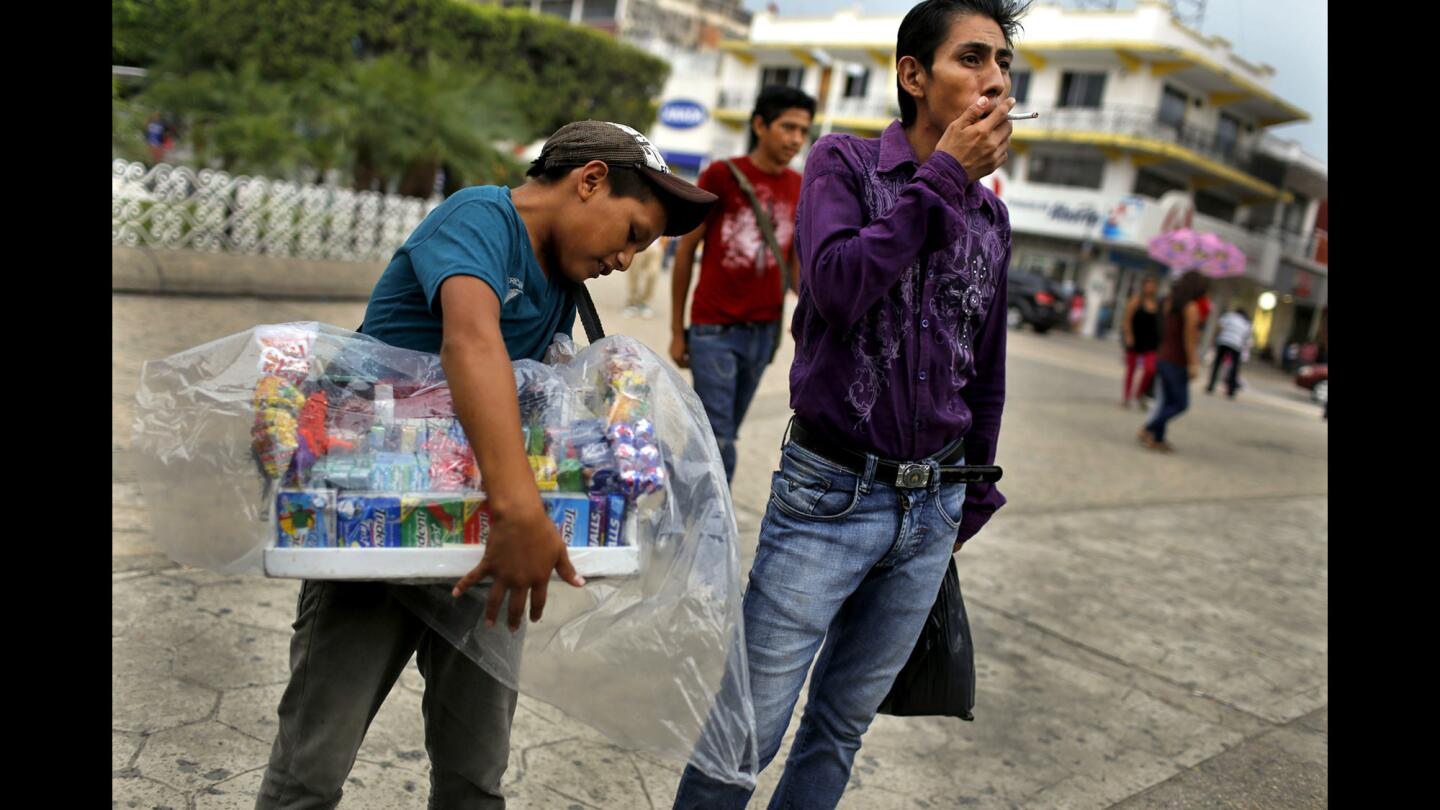
Juan Gonzalez, 10, of Guatemala sells gum and candy in the main plaza of Tapachula, Mexico, near the Guatemalan border. Children are reportedly brought into Mexico and their concession work controlled by organized crime syndicates in the city. (Michael Robinson Chavez / Los Angeles Times)
Advertisement
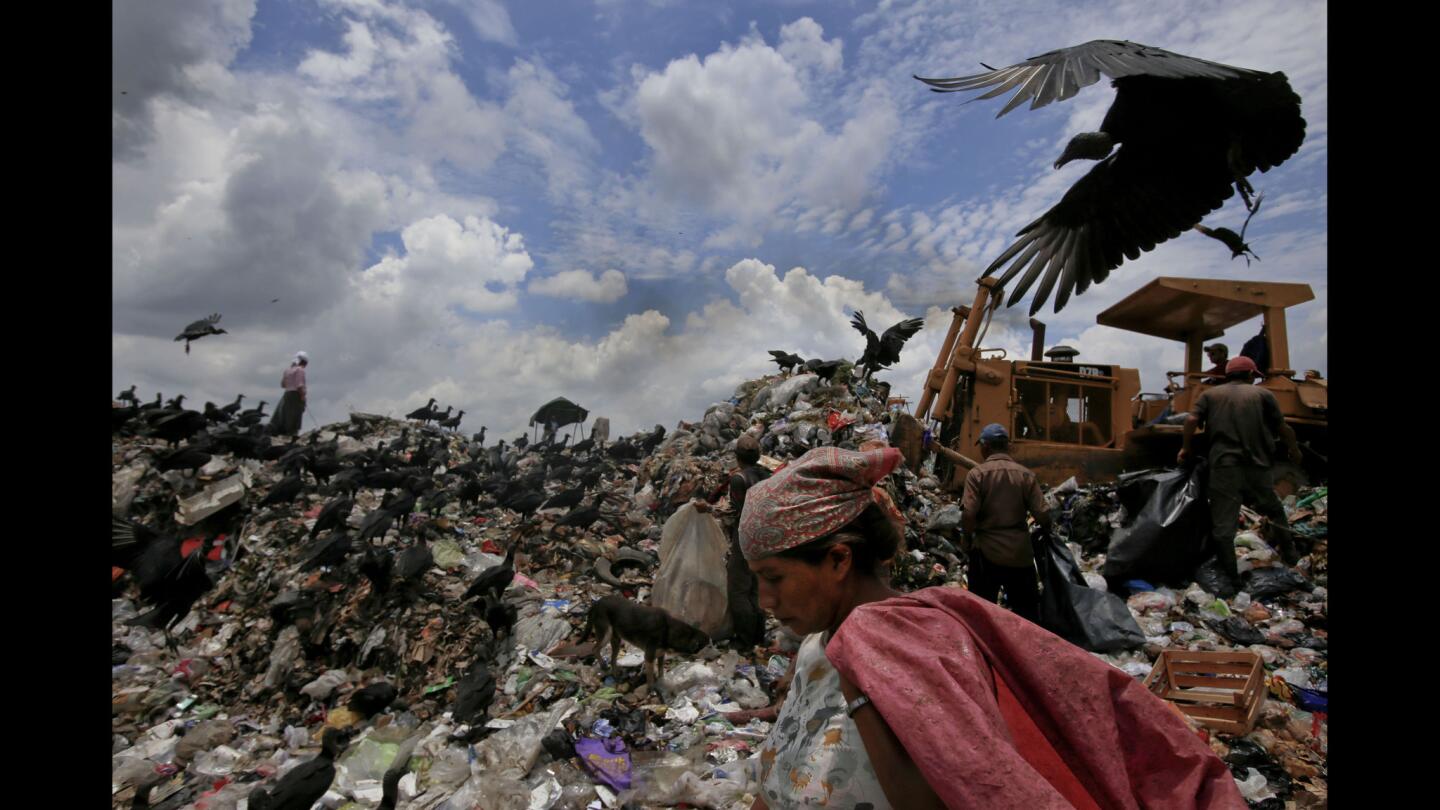
The garbage dump outside of Tapachula, Mexico is picked over for recyclables by Guatemalan immigrants. Many entered Mexico en route to the United States but were scared off by the treacherous journey through Mexico. (Michael Robinson Chavez / Los Angeles Times)
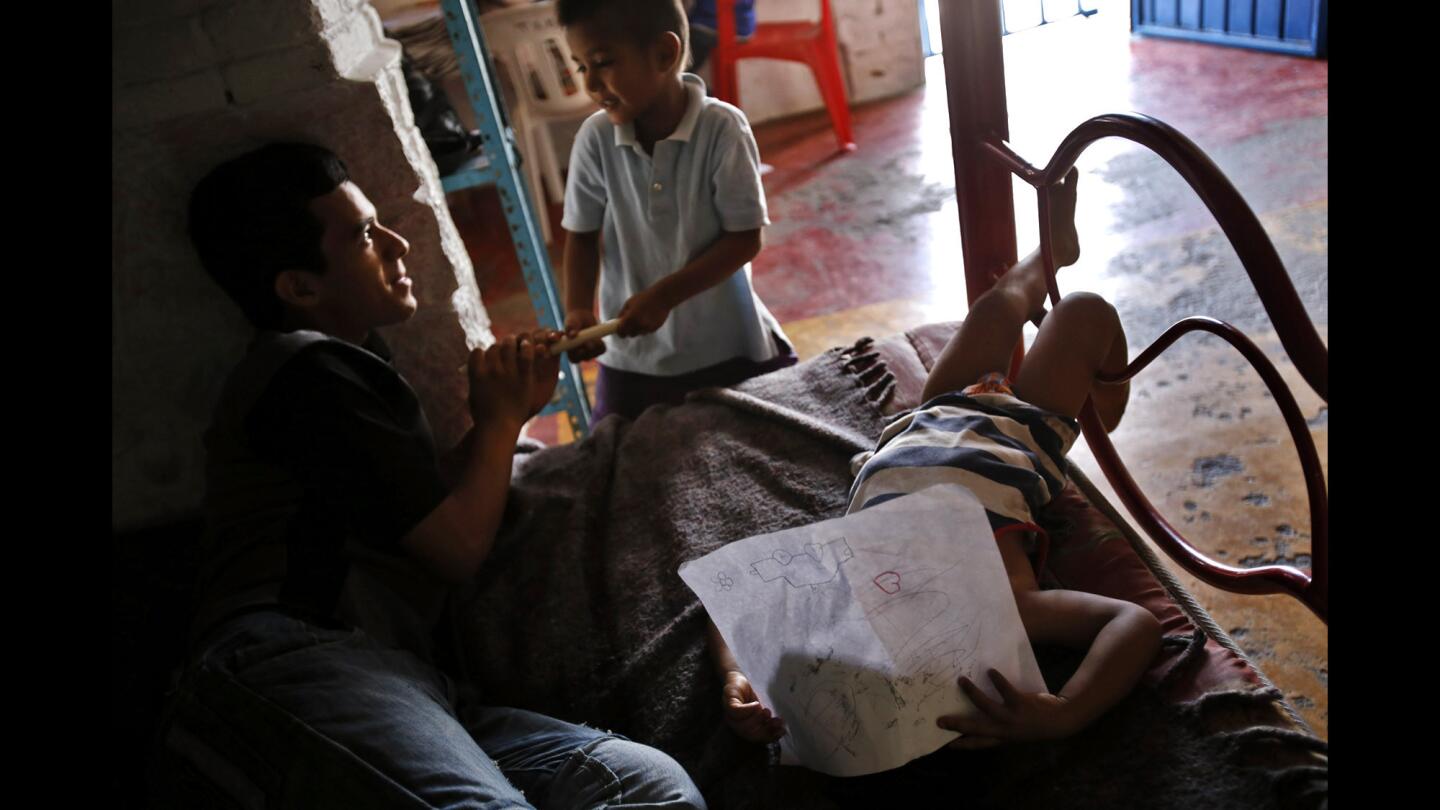
Ronnie DeLeon Rodriguez, 16, plays with Anthony Fabricio, 5, at a shelter for migrants in Tapachula. (Michael Robinson Chavez / Los Angeles Times)
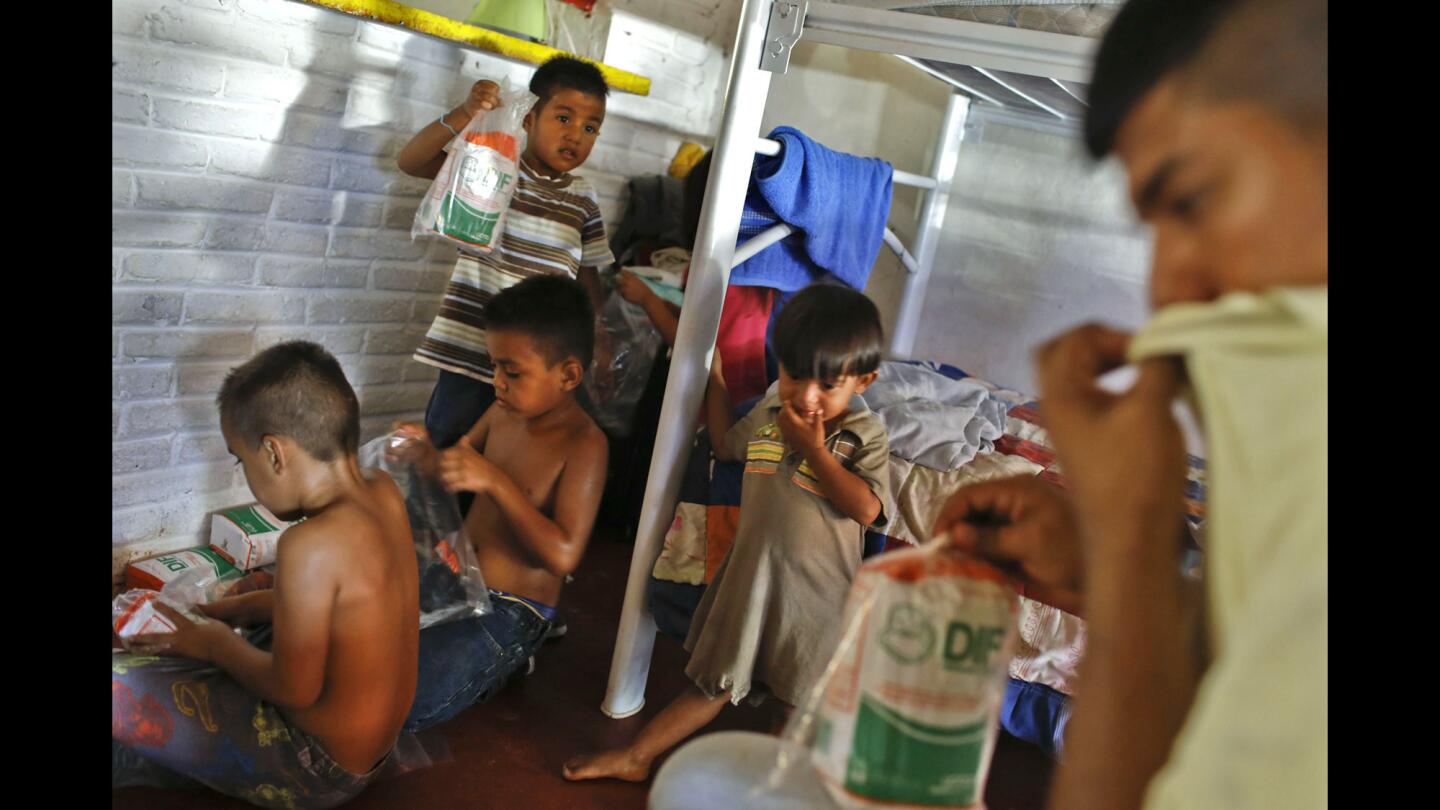
Guatemalan children bag cornmeal at a migrant shelter in Tapachula, Mexico. The man who runs the shelter has been threatened by criminals in the city who prey on the young migrants. (Michael Robinson Chavez / Los Angeles Times)
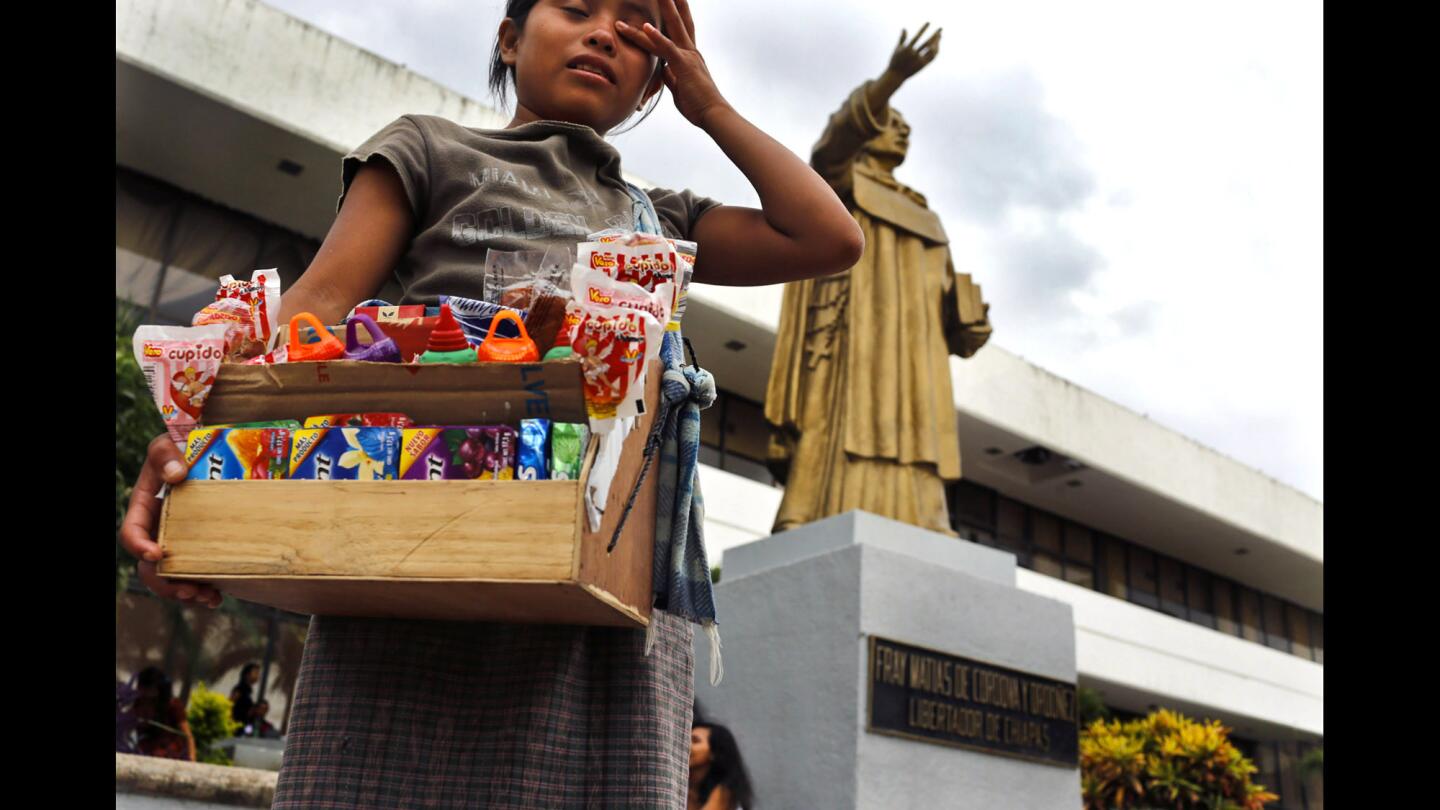
A 10-year-old girl from Guatemala sells gum and candy in the main plaza of Tapachula, Mexico. (Michael Robinson Chavez / Los Angeles Times)
Advertisement
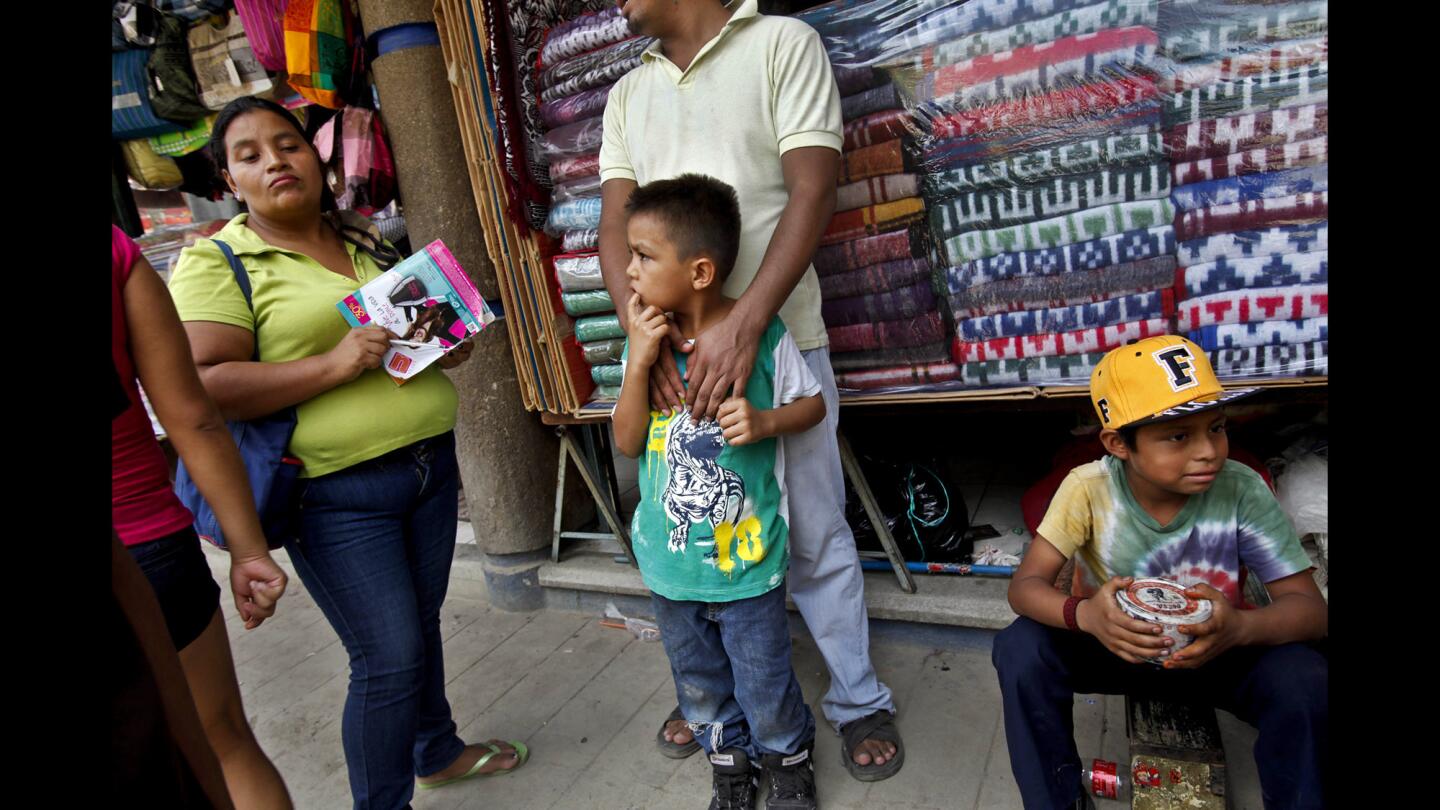
Anderson Daniel, 7, center, from San Pedro Sula, a violent city in Honduras, stands with an adult on a street in the southern Mexican city of Tapachula. A young Guatemalan, right, works as a shoeshine boy. (Michael Robinson Chavez / Los Angeles Times)
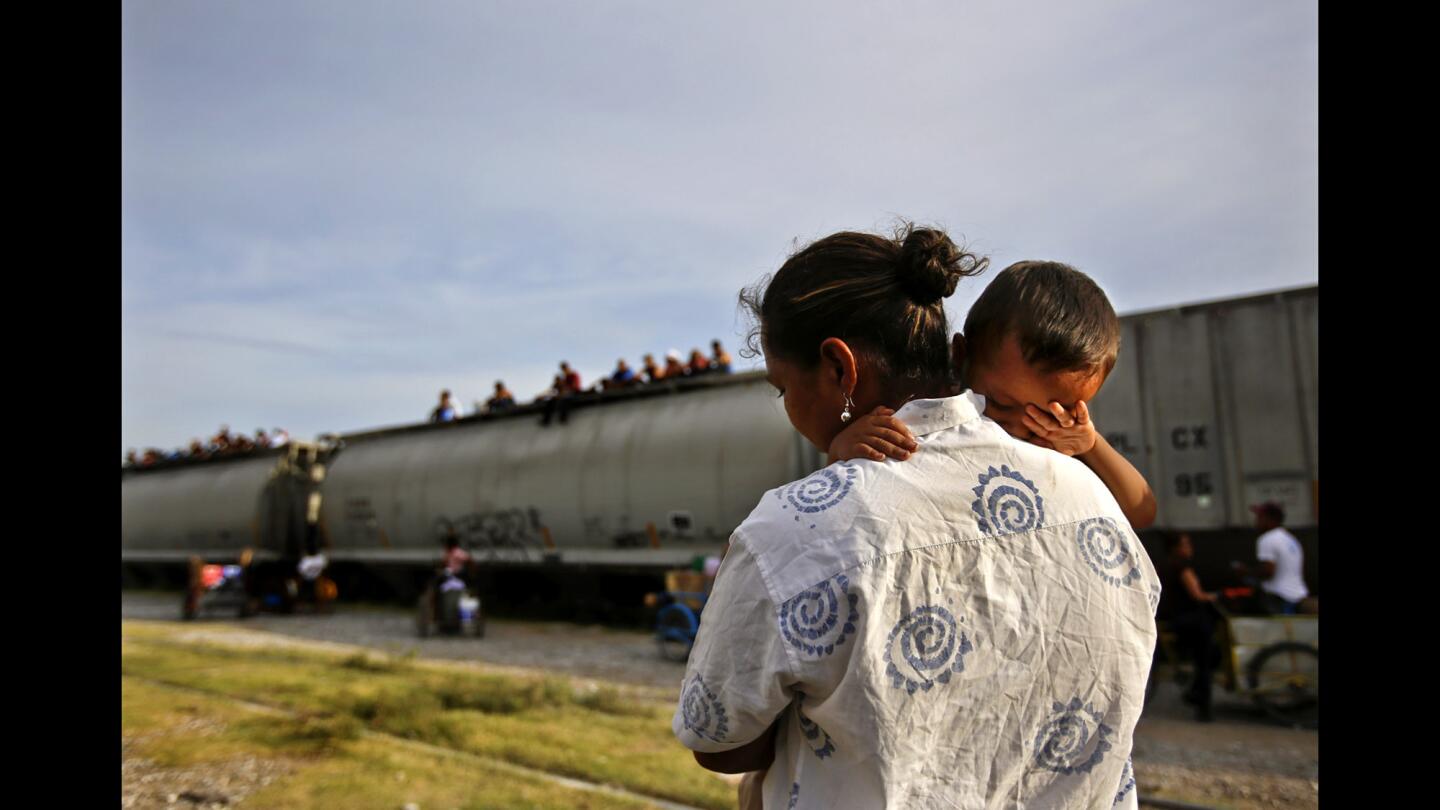
Kimberly Castellanos carries her son Steven next to a freight train she hopes will take them to the U.S. (Michael Robinson Chavez / Los Angeles Times)
